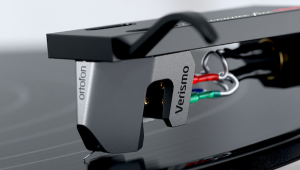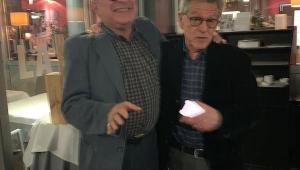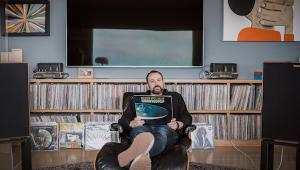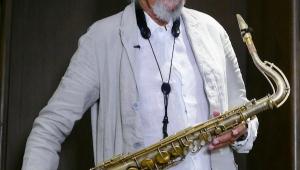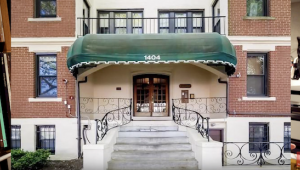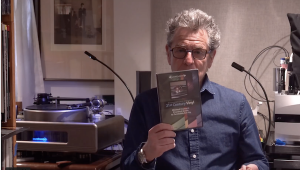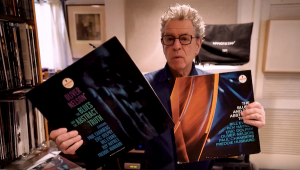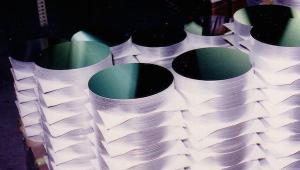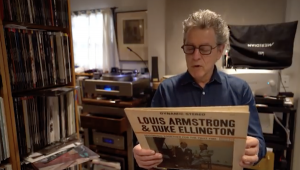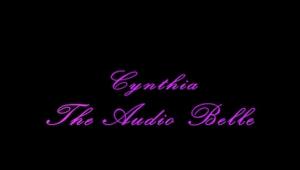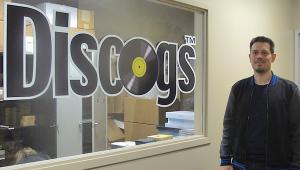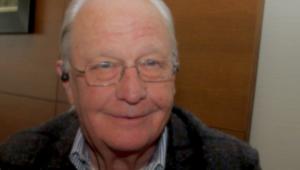Escape Road City impresses me with its clever level design and dynamic challenges. You can’t just memorize a single route and expect to breeze through. Instead, you must adapt to new obstacles each time you play. It creates excellent replay value, ensuring the atmosphere remains tense with each escape attempt.
Movie Music Recording King: Shawn Murphy Part 2

M.F.: I remember when we were working on "Tron" we were in London in the Royal Albert Hall, we had about 108 pieces waiting, and the guy's sitting up at the organ waiting, while a fight broke out between Wendy Carlos and her associate on one side, and a guy named John Mosley who we'd hired to supervise the recording sessions. And there was a copy of the score being pulled back and forth till it just about ripped in half, so that was a swell time.
S.M.:All about how it was gonna be done?
M.F.:How it was gonna be miked, and.....
S.M.:Yeah, you see that's not the time to have the discussion.
M.F.:Noooo! It was pretty much of a nightmare.
S.M.:Yeah, if you're gonna have that discussion, you have it in private and before the session. You know, when you go into the session you have to be more or less of one mind about how you're gonna do things. Certainly things come up and you have to change plans, and you often will have a Plan B and a Plan C, but it still has to be more or less in everyone's mind that this is the way we're going to approach it and.....You know, I can't remember
ever having an experience like that.
M.F.:Well, good. I probably never will have another one, because I'll probably never work on another film. That's how that can work, but that one came out sufficiently well that- next!
S.M.:Yeah, exactly. And I see, by the way, that they've come out with that in a nice boxed set.
M.F.:Yeah, I heard it's great. I'm getting it sent to me.
.M.:I saw it in one of the laser disks magazines.
.M.F.: Apparently there are comments on the analog tracks from the director, the producer and the individual in charge of visual effects, but I don't think anyone involved with the sound or the music is represented. What else is new? Do you get involved in the tape to film transfer to make sure that the integrity of the recording is maintained?
S.M.Tape to film meaning for the dub?
M.F.:Yeah.
S.M.:Oh, all the time sure. It has become a big bone of contention out here that a lot of music editors, especially music editorial companies, begun using 16 bit digital editing systems like Pro-Tools ™
M.F.:Right.
S.M.:Which I really object to, because 35 millimeter six track mag film with SR noise reduction is far superior, and my argument has been why should we take a step backwards. If we're used to using 35 mm film and that's the standard that we set for many, many years, why should we be taking a quality step backwards just to have some kind of editorial ease of operation. I'm perfectly happy to have editorial ease of operation if it doesn't involve the sacrifice of sight and sound.
M.F.:And how are you met with that?
S.M.:Well, lot's of arguments, you know, I have them all the time. Usually I just dig my heels in and try to have it my way, and I usually am able to convince people by either a comparative test or just by being immovable. "This is the way we're gonna do it.” A lot of the music editors that I work with prefer to work on magnetic film.
M.F.:I imagine so. It's like that's tradition almost.
S.M.:Ken Wannberg who's John William's music editor is a magician with mag film editing, and he always works on mag.
M.F.:Does he work on a KEM or a Moviola?
S.M.:He works on a Moviola.
M.F.:A traditionalist.
S.M.:Jim Hendrickson, who's James Horner's editor works on a KEM. Jim Wideman who's James Newton Howard's editor works on a KEM. But, at any rate, a lot of the editors that I work with still prefer to use film, but every now and then I run into this whole Pro-Tool™ argument, and what I've done is suggested that there is a digital alternative if you want to go that route. And that is to use the 20 bit or 24 bit Sonic Solutions™ system.
M.F.:Right
S.M.:And that's a pretty good sounding system if you use the very best quality converters. It's a system which is editorially very fluent and in terms of film and synchronization and so forth it's also very fast. It also allows you to hold multitrack mixes up to 16 to 24 tracks.
1) KEM is a brand of modern "flatbed" film/sound editing machine which looks and works like a tape recorder with three sets of reels (two sound, one film) and a small viewing screen. A Moviola is a brand of old, noisy, cantankerous upright editing machines which has been in use since the "golden age" of Hollywood and it's still used by veterans who claim it's much faster and more efficient.
M.F.:Does anybody bring a multi-track recorder into the dubbing station and synch it up? We did that with "Tron" to save going down a generation on the music.
S.M.:It's done rarely, because of the fact that with the use of the Light Works™ and Avid™ video based systems for picture editorial, the changes are so many and frequent that locking everything together on a multi-track really doesn't give you the editorial flexibility you need.
M.F.:What are those systems?
S.M.:Well, these are basically disk based picture editing systems, and their use now is very, very wide spread in the picture world, where the film is transferred into the box directly and everything is coded and then
basically video edited together. Using code numbers the negative is then cut later. And this is basically a disk based system which is completely random access. It allows them to go very fast and make lots of changes.
So what we find is in the sound effects world there's a lot of use of disk based editing systems to effect these changes. And even in the dialog world, although most of the pre-dubbing is done to mag film, the original dialog units are now often cut in Pro-Tools™, or Wave Frame ™. I try to stay away from that in music just because you just suffer such a big quality hit that I just don't think it can be tolerated unless you go to a 20 bit Sonic system. There a few editors who are very good on Sonic and who have big systems and who make it work. Tom Dresher in New York is one of them. He's a top notch guy, and he has a 20 bit big Sonic system which he uses.
M.F.:And do you also get involved in approving the CD transfer? I notice you work with Dave Collins at A&M frequently. Is this because you have a working relationship where you go back and forth?
S.M.:Yeah. I mean in most cases I do the editing for the CD. I work with Dave or Pat Sullivan who's Dave's accomplice to do the leveling and EQ and approve the CD master that we send out on most of these soundtracks. There are a couple of labels which will not allow me to do that. Varese-Sarabande is one of them
M.F.:Because?
S.M.:Because they won't pay. They have their own people that they like to hire to do the mastering and they pretty much un-include myself or any other engineer who wants to be involved.
M.F.:What's the- can you talk on the record what the quality of the work is compared to what you would like?
S.M.:Well, the place that they use is fine. It's Joe Gastwirt's place, and Joe is great. The problem is not Joe because Joe makes very good transfers and does a good job of mastering and editing. It's that the production of the CD is often sub-par .The process I go through on a score is basically, I read a score when we record the cues, and I make notes on my score on every take about what are the good parts, what are the bad parts. You know, the music editor and I get together and we decide, sometimes without the input of the composer - sometimes with, which tape we're gonna use for what part of what cue. We sort of figure this out as we go.
M.F.:How many edits are in a normal cue. Let's say a three-minute cue. How many takes are put together to make a final cue?
S.M.:Well, it may consist of two or three or four takes, but there could be anywhere from a couple of edits to a dozen edits.
M.F.:Wow.
S.M.:In a three-minute cue. It's not common. I'd say more common is half a dozen edits in a three-minute cue.
MF:We were talking before we started, about the gold CD of Dances with Wolves.
S.M.:Right, and I read your article on that issue.
M.F.:Oh, good. It is much better than the original.
S.M.:Um hmm. I would agree with that.
M.F.:And you had said that you thought it could have been even better.
S.M.:Yeah, I think so.
M.F.:Why and how?
S.M.:Well basically just to give you the full story on where that material came from, most of the mixes that came to Kevin (Boutote) and that I used on the original CD production were live mixes. They were straight off the board to the half-inch two-track, 15 IPS. There were some cues that were remixed and those were remixed from the 24-track masters to a half-inch two track usually right after the session, because with the remixes, it's all either a balance change that we knew about right away, or an overdub. In a couple of cases we overdubbed an instrument too, and we had to remix the cue for that. So I would say in the case of the original material, 80% of it was live mixes, and 20% was mixed out from the masters. All analog. None of that stuff went through any digital machine whatsoever. So that's where it came from.
M.F.:I see.
S.M.:And Kevin made his 20 bit transfers from the original analog masters which I found and sent to him.
M.F.:Why was the original CD "ADD"?
S.M.:Well ADD meaning it was original analog. It was then transferred into a digital editing system which was a Sonic system and then a digital release. The middle "D” is the editing system. The first "D” is the original recording. The second "D” is the intermediate editing, and the third "D” is the final delivery.
M.F.:Right.
S.M.:Now Kevin made a new 20-bit transfer through his choice of converter. It was fine what he chose.
M.F.:He used the Massenburg I think.
S.M.:Yeah, which is a really good one. It uses an Ultra Analog, 20 bit chip set.
M.F.:He said he was interested in getting really good bass, which was one of the things that I commented on in my review which kind of made him happy that I noticed.
S.M.:Right. But what Kevin didn't do is, he didn't make the internal edits that we made from take to take because he didn't have the scores.
M.F.:Oh. And I didn't notice. Oops!
S.M.:Okay. So that was one step which was left out. He basically chose the best tapes which were, you know, indicated on the boxes, and used those without making the big internal edits which were made in the
original production.
M.F.:So what you're saying is if I compare the two CDs...
S.M.:You might find a different performance.
M.F.:Musically, I'll find differences.
S.M.:You'll find a few.
M.F.:I know I found that dropping of the baton on the original that they pulled out of there.
S.M.:Right. You see I would never take that out.
M.F.: I wouldn't have either.
S.M.:That kind of people noise I just don't take out.
M.F.:I think it's great. That's what it is.
S.M.: It's a person, a bow hitting his hand, or a person making a noise. That's okay, you know
.M.F.:I spoke to Kevin about that and he said it was Dieter Deutsch's decision, the executive who oversaw the release.
S.M.:Yeah, well. it wouldn't have bothered me.
M.F.:Do you have a different working dynamic when you're dealing with let's say John Barry or James Horner or Danny Elfman. Is it a completely different dynamic or is there a similarity to the way you work
with all of them?
S.M.:Well. I think it's the same and different. I mean we're all different personalities, and they all like to run their sessions in slightly different manners. You know, they have different personal dynamics that they
bring to the session. It's my job to sort of fall into that and make things easy for them; make their life easier as a composer and make a good recording that falls into their universe. On the other hand, I think that I'm the same in terms of the sort of sound that I'll go for and the sort of standards that I uphold and sort of ask them to uphold with me. And I think they're very receptive to that. You know, Danny Elfman's (2) a funny guy,
2) Originally lead singer of the rock group Oingo Boingo,
because he's very much a record guy and a really talented composer, and I like his music for films a lot, in many cases.
M.F.:It's very Bernard Herrmann-ish to me.
S.M.:Yeah. I think he would admit to that. He loves Nino Rota and Bernard Herrmann. He would admit that the influences are there, but they work well.
M.F.:Yeah. Absolutely. "Batman" -the sound on that is outstanding ("Batman" was engineered by Eric Tomlinson and mixed by Murphy )
S.M.:Right.Well I think that with Danny I was always having to argue with him this ratio of close mike to room mike, you know, cause if it were up to Danny, he'd mike everything close up and then push it right in your face.
M.F.:I would imagine that
S.M.:And my approach is very much not like that, and we actually have had a really good funny relationship where you'll be sitting there mixing and he'll start to push things up and he'll comment to me after a few minutes of this of how the orchestra is starting so sound a little small, you know, and I'll laugh and say it's because you've got every fucking mike in the room open. Why don't we close some of them, and so we'll close them off and try, because one of the errors a lot of people make when they mix is they'll turn a mike on for one specific effect, and they'll leave it on. It's on forever. Your sound always improves the fewer mikes that you
use. So I'll sit there with him and constantly sort of slap his hand, you know, to get him to quit running the faders up and leaving them up and we'll laugh about it, because it's his personality and his background versus
mine. But I think the results have been really good, particularly "Edward Scissorhand." I think that one turned out sounding really, really good.
M.F.:Did that come out on CD?
S.M.:Yeah it's out on CD.
M.F.:I don't have that one.
S.M.: It's always that balancing act between what the composer hears in their head and how much of it gets on the page for the orchestration and how much of it we have to create in terms of sound versus how much actually gets performed in a room and then there's the whole perspective question.
M.F.:Yeah.
S.M.:You know, with Danny it's a different perspective than with John Williams, or John Barry.
M.F.:Right. Now how much of an influence is what you're doing having on other people in the business of recording music for film?
S.M.:Well I think that if you were to look at the history of motion picture sound track recording you would find, as you indicated, that prior to the early '80's it was very much the close mike in your face sort of sound, and it has generally gotten away from that. Wouldn't you say?
M.F.:Absolutely. It's improved tremendously.
SM.:Yeah, I think it has, and I think a lot of us, and I mean specifically engineers like Armin Steiner who does a great job and who is very much a guy who lets the music speak and lets the room work with you is that way. I think Dennis Sands has become very effective with that kind of technique and Bob Fernandez.
M.F.:What's your favorite room to record in?
S.M.:Favorite of all or favorite in LA?
M.F.:In the world.
S.M.:I think my favorite of all is still Abbey Road.
M.F.:I knew you were gonna say that.
S.M.:I think Abbey Road 1 is just stupendous, really.
M.F.:It's so big. The sound is so big on the ones that are done there.
S.M.:Yeah. It's really great. It's a room that you really just don't fool with.
(At this point while M.F. turned over the tape and the discussion turned to The Beatles)
S.M.: Which, Abbey Road?
M.F.: Yea, from a digital master. Ridiculous.
S.M.:I've got all those old Parlophones (Beatle albums)
M.F.:Me too ,with the yellow and black label.
S.M.:Yeah.
.M.F.:They're just the awesome.
S.M.:They're great.
M.F.: Now, on the "Glory" soundtrack was the Harlem Boys Choir recorded separately from the orchestra?
S.M.:Recorded at the same time.
M.F.:I knew it. I could not believe that you'd be able to do that separately. What was that like?
S.M.:Well, it was great fun. That was a really good experience I think for all of us because it was a good picture, a good score, and we had this other great influence of having this choir there which is beautifully prepared and sang great and was up to the task of singing live in the room with the orchestra. It was done at MGM.
M.F.:That's a big room.
S.M.:It's a pretty big room. It's 93 by 66 by 24.
M.F.:It's in Culver City.
S.M.:In Culver City.
M.F.:Yeah, I've been in that room.
S.M.:So it's wider than it is deep. We set the choir up directly behind the orchestra so that they basically were just in a normal concert choir position, and they were conducted and performed live on the cues that they
were written on.
M.F.:Wow, it's just so-that first big crescendo on side one- is there overload there or is my cartridge cartridge mistracking?
S.M.:There shouldn't be an overload. I don't think there is.
M.F.:I think what it is, is there's just so much going on.
S.M.:Yeah.
M.F.:It's stupendous.
S.M.:Yeah. The percussionists had gotten a hold of a lot of these-I don't know if they were antique drums, but they were authentic in terms of the kind of tensioning and skin hit material that they used on the drum. A lot of it was very carefully thought out in terms of the instruments that were used. And we tried to place them in the room rather than place anything with microphones. We tried to actually put the drum in the room where it sounded good.
M.F.:It's a big gigantic sound.
S.M.:Yeah. It worked out really well.
M.F.:Have you got the record of that?
S.M.:I don't have a record of it.
M.F.:Wow. You want one?
S.M.:I'd love one.
M.F.:I'll try to find one for you.
S.M.:If you run into one.
M.F.:I don't know whether it was actually cut from the analog master or from a 1610
S.M.:It may have been cut from a digital master.
M.F.:It still sounds pretty darn good.
S.M.:I think that one turned out really well. It's interesting, I don't know that this has a lot to do with it, but it was the early into when
I'd started running a lot of the mikes straight to the machine from outboard preamps, and it was at a time-I'm not a really big cable fanatic- but it was a time where I was trying out different types of "high-end” cable running from the mikes to the preamps to the machines.
M.F.:Notice I haven't asked you what kind of cable you used, but I will. What do you use?
S.M.:It's all different. I mean that particular show was done with MIT cable. I've got lots of different cables.
M.F.:How is that taken on the mixing stage when you try changing cables?
S.M.:The guys are all used to it. Crews are great now. They're used to me and running cables through the walls and outboard preamps.
M.F.:Not running through those XLR cables all through the whole place?
S.M.:No, basically. And the guys are all used to it because I'm not the only one who does it anymore. Most of the engineers do the same thing.
M.F.:It's great to hear that.
S.M.:You know, most of them have their own racks of preamps whichever they happen to like and the technique is similar. So most of the stages have installed BBC quad-type XL cables, you know, in the floor and run them through the walls so that you have them available even if you don't bring your own cable. My feeling about cable is much that it's a termination situation as opposed to this very complicated cable technology. What
you're really doing is you're dealing with a transmission line. You're dealing with differences in impedances and terminations and that's what makes them change their sound. You know, the argument that cables don't have a different sound is just not true because they are basically acting as transmission lines and that in itself changes the sound. There's no question about that. They do sound different.
M.F.:Have you ever had any serious screw ups that you want to talk about? Anything happen that's humorous or....
S.M.:You know, we've had tapes recorded with no time code on it. We've had tracks accidently erased. We've had all kinds of things happen. The thing that you try for is never to let the same thing happen twice!
M.F.:Right.
S.M.:You have a career in recording that goes 15 or 20 years or so, you're bound to have those things happen. You just hope they don't happen in a way that can't be repaired or in a way that seems like the same problem's repeating itself, and I think I've been lucky that that hasn't happened. You know, the unfortunate situations occur, you go on.
M.F.:When you mix, do you mix in a big room for film, or do you mix in a small room for the home CD buyer?
S.M.:I virtually always mix in a control room setting. Now sometimes it's a big control room, but it still is not a theater setting.
M.F.:And then do you take the mix and reference it in a big room?
S.M.:I have not been doing that for a while because I have basically come to a monitoring set up and monitoring curve that I know will work in a big room.
M.F.:What kind of speakers do you usually monitor on?
S.M.:I'm using Wilson WATTs as I have been since 1988.
M.F.:Oh, you carry them around with you?
S.M.:Yeah, now they're WATT 5s. I started with WATT 1s and Entech subwoofers, and Krell amps. I've got the system cased up and it goes around with me
.M.F.:And what do people say when they see that?
S.M.:Well, they're used to it again.
M.F.:You mean you don't use Yamaha NS10M's with toilet paper stuffed in the tweeters?
S.M.:Never did it.
M.F.:Why not?
S.M.:What can I tell you?
M.F.:You're just an iconoclast.
.S.M.:Yeah, I know.
M.F.:You didn't record the (John Barry) "Out of Africa” soundtrack?
S.M.:That was prior to my time with John Barry.
M.F.:You know that just came out on vinyl.
SM.:That's what I heard. And that's a Dan Wallen recording. And a very good one.
M.F.:Yeah, for a closely miked job.
S.M.:It's a closely miked recording, but, you know, of the people who specialize in that technique, I don't think anyone has done it better than Dan Wallen. I think his style and close miking for film sound was really sort of the pinnacle of that technique.
M.F.:Yeah, I thought that soundtrack had a very exciting sound, not anything to do with what you do, but I thought it was very, very good for what it is. When the strings swell, it's a much more of a torpedo effect, you know, when it kind of hits you.
S.M.:Right. Exactly, and that's the kind of sound he likes, and I think he did it best. It really was good, I think. He'd worked with John Barry for a long time, and I think that was again at the time, the sort of sound they were going for.
M.F.: The sound on the first "Moviola" - the John Barry musical suite CD that you recorded-I don't know whether you read "The Absolute Sound".....
S.M.:I get it. I don't remember seeing anything about that.
M.F.:I reviewed that. I slathered and blathered and it's so good. I mean the sound ...that is Abbey Road, right?
S.M.:It is Abbey Road. One was done at Lyndhurst.
M.F.:I mean that is a "must have" recording. We did some of "Tron" at Walthamstow Town Hall (a famous recording venue outside of London).
S.M.: I've been to Watford (another classic recording location), but I've not been to Walthamstow The problem now at Walthamstow is it's basically undercontract to Decca, and Decca schedules the room so that if you want to go to Walthamstow you call Decca and you ask them if you can use the room, and if they're not using it and if everything is okay otherwise, then you can use it. The unfortunate thing is it's a town hall and it's used for dances and bingo or who knows what else.
M.F.:Right.
S.M.:So, you're constantly having to load in, load out and then you're at the mercy of Decca, and so, you don't get in there as much as you'd like to sometimes, but Watford is a little easier to deal with and
it's also excellent sounding.
M.F.: Would you like to see "Moviola" out on vinyl?
S.M.:I'd love to see a lot of these soundtracks out on vinyl, to be honest with you.
M.F.:Well you never can tell.
S.M.:I think that, the whole RCA vinyl re-issue thing (Classic Records) is great.
M.F.:Yeah.
S.M.:I mean and it's not because the new ones sound like the old ones 'cause they don't.
M.F.:Right.
S.M.:But they sound darn good.
.M.F.:Yup.
S.M.: I have most of them and I really enjoy them a lot.
M.F.:Me too. It's a different thing, and, you know, people usually try to say one is better than the other. I'm just...
S.M.:That's not the argument at all. It's the fact that you're never gonna be able to duplicate the old EQ and the old cutter heads and all that stuff. It's not gonna happen-forgetting the mastering chain -leave that out of it, it's different too.
M.F.:And is it worth trying to duplicate what was?
S.M.:Exactly. Do you want to do that or do you want to just make a good sounding record?
M.F.:Yup
S.M.:Which they are. I think they've been very successful in that way.
M.F.:Me too.
S.M.:They've made good sounding records. I enjoy them immensely. You know, they kind of bring it back musically where the CDs never did.
M.F.:That's right.
S.M.:And for that I think it's great, you know, I'd love to see a lot of them come out via that route.
MF: So, you're a recording engineer, you hear master tapes all the time, what sounds better, records or CDs?
S.M.:Well there's no question that records are better.
M.F.:That's a great place to end. Thank you.
Shawn Murphy: A Selected Discography
Soundtracks:
Always
John WilliamsMCA 8036 (LP)
Field Of Dreams
James HornerRCA/Novus 3060-1(LP)
Empire of The Sun
John WilliamsWB 25668-1 (LP)
The Land Before Time
James HornerMCA 6266 (LP)
Glory
James HornerVirgin/Classic 91329 (LP)
Dances With Wolves
John BarryEpic EK63555 (CD-newly mastered in 2004)
Batman Returns
Danny ElfmanWB 9 26972-2 (CD)
Sneakers
James HornerColumbia CK53146 (CD)
Chaplin
John BarryEpic EK 52986 (CD)
Patriot Games
James HornerRCA 0786366051-2(CD)
Somersby
Danny ElfmanElektra 9 61491-2 (CD)
Shindler's List
John WilliamsMCAD(gold) 11313 (CD)
My Life
John BarryEpic EK 57683 (CD)
Legends of the Fall
James HornerEpic EK 66462 (CD)
Black Beauty
Danny ElfmanGiant 9 24568-2 (CD)
North
Marc ShaimanEpic EK 66151 (CD)
The Specialist
John BarryEpic EK 66370 (CD)
Casper
James HornerMCAD 11240 (CD)
Jumanji
James HornerEpic EK 67624 (CD)
Ghost (reissued)
Maurice JarréMilan 7313835733(CD)
Orchestral Soundtrack Suites:
Moviola
John BarryEpic EK 52985 (CD)
Moviola II
John BarryEpic EK 66401 (CD)
These are but a few of the soundtracks engineered by Shawn Murphy between 1981 and 1995. Among the others: "Country", "Jacob's Ladder"
"Edward Scissorhand", "Patriot Games", "Clear and Present Danger", "Nixon" "Sabrina," "Apollo 13." and "Outbreak".
By all means hunt down an LP of "Glory", it has everything you'd want from a great recording and it's one of Horner's most inspired works. "Chaplin" is another outstanding recording done at Abbey Road, Murphy's favorite room. Check out track #7. Another winner is "Batman Returns", which has subterranean bass and superb soundstaging and imaging. Put your seatbelt on and play track #5. The opening minutes of "Casper" has some of the deepest bass I've ever heard recorded, and the rest ain't shabby sounding either. My notes say "Track 3!!!!! Warm! Superb!." For "Legends of the Fall" recorded at Air Studio London, my notes say "stunner", "Glory-like", "great piano!" "dreamy, haunting", "great bass drum!- check out track 4". "Patriot Games"' notes read "superb imaging, dynamics, drums, great one!, contains 'Harry's Game' from Clannad, highlight: track 4". Notes for "The Specialist" read "big, deep stage, good piano, typical Murphy". Notes for "Sneakers" read " opening credits outstanding! vocals, chorus adds interest. great focus and bass". Obviously you have to like the music, but any of these discs offer demo quality sound.
The "Ghost" CD which has just been re-issued with bonus tracks (late fall '95) is an all digital recording, with some tracks recorded by Robert Fernandez at Burbank Studios and others by Murphy at Columbia. Remix is by Murphy. The digital recording offers very deep and tight bass, smooth, unctuous highs, and a flourescent on black velvet soundstage. Overall, a very atmospheric, mysterious, and effective score from Jarré- a master- with lots of modern synthesizer effects added on top of orchestrations, plus The Righteous Brothers' version of "Unchained Melody", ironically written by Alex North for a 1950's prison movie.
If I had to recommend one disc it would be Moviola , which features John Barry conducting a suite of his best themes including "Out of Africa", "Midnight Cowboy", "Body Heat", "Somewhere In Time", "Born Free", "Dances With Wolves", "Chaplin", "The Cotton Club", and "Moviola" among them. The Abbey Road recording is stunning- you'll melt into your chair from the string sound. Moviola 11, while somewhat darker sounding and not as airy (though it was recorded at Air studios) is also worth picking up: it contains a James Bond medley that's fun, including "Goldfinger", "The James Bond Theme", "From Russia With Love", and "Thunderball" and an expanded "Dances With Wolves" suite, plus other Barry themes.
Of the vinyl issues, aside, of course from "Glory", John Williams' "Empire of The Sun" track sounds all analogue and offers outstanding sound and especially wide dynamics. The "Field Of Dreams" is disappointing in that it sounds generated from a mediocre digital transfer: homogenized strings, lumpy, formless bass etc. , though the music has some fine moments. "Parenthood" is classic Randy Newman "Americana", with dynamic and somewhat aggressive sound on top. If it's generated from a digital transfer, it's a good job. "The Land Before Time" is a cutesy animated cartoon about dinosaurs, but the Abbey Road, London Symphony Orchestra recording is gigantic- warm and inviting-and sounds all analogue. If you run into it as I did, for $2.98 or so, check it out.
- Log in or register to post comments




